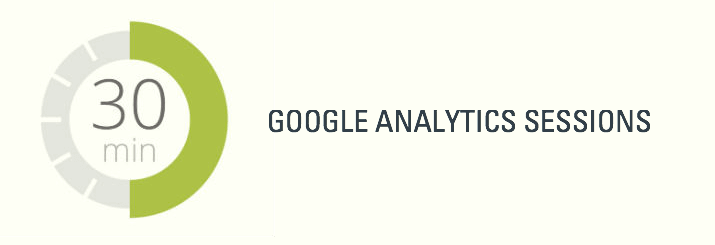When designing and developing a website, properly measuring a website’s ongoing performance is an important step to ensuring your marketing plans are giving you desired results. Since the introduction and roll out of the new Google Analytics Universal, account owners now see a dramatic change in possibly the most important metric you can pull. “Visits” are now “Sessions.”
What Is a Session?
A session is defined as a group of interactions one user takes within a given time frame on your website. Google Analytics defaults that time frame to 30 minutes. Meaning whatever a user does on your website (e.g. browses pages, downloads resources, purchases products) before they leave equals one session. In short, the Sessions metrics is a unified way to report “Visits” and “Active Users.”
What makes session reporting better than just “visits” is that you can accurately gauge if individuals are truly interacting with your website. Since a session times out, “passive” visitors won’t distort data. For example, visitors who keep your website open in a separate tab and continue browsing elsewhere won’t be counted past the 30 minute session marker.
Can I modify Session reporting?
Yes! As stated earlier, Sessions default to measuring 30-minute increments, but can be as little as one minute to as long as four hours. Google recommends thinking of the following when considering changing the time of a session:
- If your site logs a user out after a certain amount of inactivity
- If your site houses lengthy content that you anticipate the user spending time on
- If a campaign is expected to run for less than two years (this is specific to campaign timing, not individual sessions)
If your website meets any of the three points above, it’s wise to change your Session timeout handling to track user accurately. Otherwise, use your current average time spent on site as a baseline for what your timeout amount should be. For example, a website that receives an average visit duration of two minutes is certainly covered within the 30 minute amount, but could maybe afford to reduce it to 10 minutes.
Are there other modifications I should consider?
Yes, again! Within Universal Analytics, account holders can exclude specific referral traffic from Session reporting. The default reports any referral traffic as a new session, which the majority of the time is an accurate assumption. But, if you’re a B2B website that uses a third party web application, such as a scheduling tool or customer portal, excluding this URL in your Google Analytics will keep the entire visit within one session.



